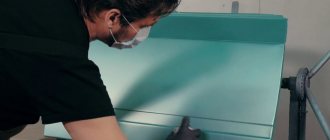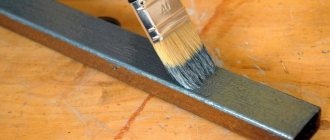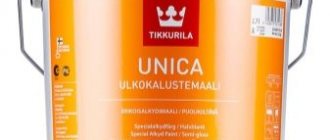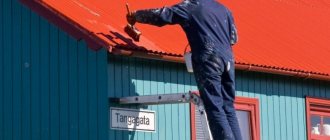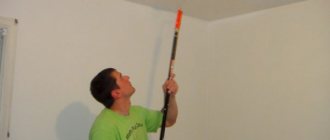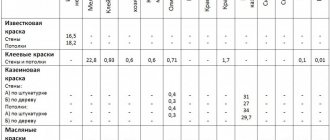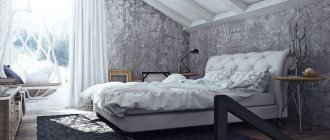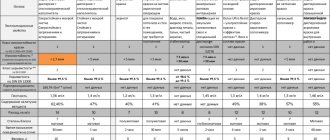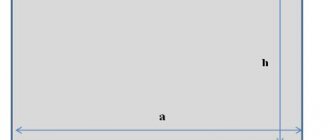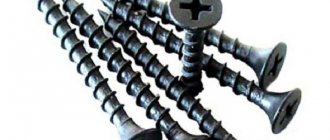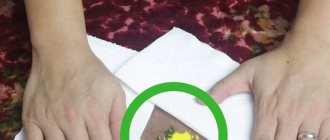During repairs and proposed paintwork, it is important to calculate the required amount of paint. Despite the information indicated on the packages, the amount of composition may depend not only on the type of enamel, but also on the type of surface. Therefore, in order to correctly determine the consumption of acrylic paint per 1 m2, you need to know the general principles of calculation and what types of surfaces and coatings there are.
Accordingly, different types of paints can be used to paint different surfaces. For example, when painting ceilings, a water-dispersed acrylic composition is most often used. Wood and metal surfaces are treated with various enamels. For facades, special compounds are used that are resistant to water and temperature changes. Some of the most effective formulations for application are powder-type compositions.
In order to calculate everything correctly and save yourself from the need for a second trip to the store, you first need to know the paint consumption rates, depending on its composition.
Type of acrylic paint used
To calculate the product consumption per 1 m2, you must first determine what is included in its composition and the level of preparedness of the surface for painting. The basis of paint is water. Its consistency contains insoluble pigment elements. When it hits a surface, the liquid will evaporate over time, and the pigment will color the surface, forming a film on it. The paint can be used in any climate, under any conditions, and it also protects the material from moisture. The facade of the house is usually painted with water-based paint in two layers. The second coating is carried out 1.5 hours after applying the primary layer, until the moisture evaporates. It consists of drying oil, pigment, and fillers. The latter are purchased separately or included in the finished product. Thickened paint is pre-diluted. The consumption of this finishing agent depends on the color of the paint. If you do not apply a second coating, for example with blue paint, the facade will have a blue tint. For guidance, experts recommend an average consumption of façade paint of 150 g/1 m2. Alkyd acrylic paints are diluted with kerosene, drying oil or turpentine immediately before use. Their consumption for façade decoration will vary. The volume of special additives and impurities, often used to give tones greater saturation, is added to the calculations. The paint is distinguished by the fact that, in addition to updating the appearance of the house, it resists the formation of various types of microorganisms, which significantly extends its service life and allows you to save on repairs. Professionals recommend adhering to the standard: a liter of facade paint per 10 m2.
Beautiful examples
In the recent past, plaster was used only to level walls. Now interior designs are replete with beautiful examples of painting plastered surfaces.
One common application is to paint plaster in two colors. To do this, you can combine two neutral colors, for example, white and black.
A gradient in an interior looks very beautiful and stylish when shades of the same color palette of different saturations are combined.
Often, bright colors such as rich turquoise or burgundy are chosen for the base layer, and a gold and bronze coating is chosen as the second layer.
First, one tone is applied to the surface using a roller, leaving it to dry for 2-3 hours. After a while, apply a second one, barely touching the protruding areas of the coating.
To simplify the painting process, you can add a color of the selected shade to the plaster solution.
Calculation of façade paint per sq. meter
Consumption will depend on the density and composition of the paint. Correct calculation is especially important during repair work. If there is not enough of it, then you will have to buy more, and it is not a fact that the tones will match. There is also no need for extra. The money is spent, and the paint will dry before it is needed again. Manufacturers of Tikkuril, Dulux, Tex provide the opportunity to find out the required amount of product upon purchase. Their cans indicate paint consumption rates in kilograms or liters per square meter. meter for double coating of a flat and well-primed surface. For each individual case, paint consumption is determined by factors relevant to the conditions.
What factors does consumption depend on?
The norms given above are considered generalized, standard
However, these figures may change under some circumstances, so it is important to consider various factors when purchasing water-based paint, which are listed below
In many ways, the consumption rate depends on the hiding power; this indicator is individual for each dye. Covering power directly affects how many layers need to be applied. Standard paintwork is two layers of paint, with each subsequent layer requiring less paint mixture. What the consumption will be is largely determined by the type of surface. Each building material has its own absorption capacity. For example, drywall and wood absorb paint much faster and to a greater extent compared to brick and concrete. In addition, the following factors influence spending:
- What tool is used to apply the color mixture? A brush is considered the most economical, while a roller has a higher consumption, but the specific indicator depends on the length of the pile. The longer the villi, the greater the consumption. The sprayer also applies the mixture quite economically, but when using this tool it is quite difficult to calculate how much mixture will be needed, especially if you have no experience working with it;
- air temperature. When dyeing is carried out at high temperatures, the consumption will be greater, because the liquid evaporates much faster. Too low a temperature also leads to uneconomical use, because the composition cannot adhere normally to the base;
- humidity. A dry surface absorbs the coloring solution faster. It is not recommended to paint if the air humidity is above 80%;
- preparatory work. If putty and primer were applied during preparation, then the composition will be consumed much more slowly than if putty and priming were not carried out;
- painting technology. This factor is also important; it affects the thickness of the layer, and accordingly the rate of consumption of the coloring mixture.
So, to accurately calculate how much water-based paint you will need, you need to take many different factors into account. Experts always advise purchasing the composition with a small supply, so you don’t have to go to the store again to purchase additional paint and varnish material.
Area calculation
The procedure is necessary to accurately determine the consumption of the coloring composition and consists of measuring the dimensions of the room. The area of the floors is determined by multiplying the values of their two perpendicular sides. To determine the size of the working sections of the walls, you should subtract the areas of all door and window openings from their total size. On the back of the container the consumption of product per square meter is indicated. m or how much one liter of it can cover sq. meters of area. On the visible side - volume in kg. It doesn’t hurt to know how many dyes and fillers are contained in a liter of product in order to have an idea of such characteristics as hiding power.
The final stage
After you have applied the paint with your own hands to the facade of the house, you can breathe a sigh of relief - the hardest part is over, all that remains is to decide how to care for it.
- Most paints are tolerant of chemicals, so if the packaging does not indicate that it cannot be washed with household products, feel free to use it.
- Do not use hard brushes or sponges when in contact with the painted surface - this may damage the facade.
- If there is an obvious defect (crack or chip), it is difficult to match the paint color to color, so protect the walls from physical contact.
After reading this article, you can easily choose the optimal paints, count the number of cans and paint the surface yourself. There is a special video: painting the facade, which will help answer the questions that arise.
Covering power
This characteristic depends on the additives, and which component determines the basis of the coloring agent. By summing up the sizes of all working areas, you can calculate the consumption of the selected finishing product. Dulux and Tikkurila brands are expensive, but more economical. Just one kg of water-based product can cover a fairly large surface. NTs-132 and PF-115 form a strong film on it, but per square meter. m their consumption will increase. The consumption of acrylic paint directly depends on the density of the consistency and its composition.
Final tips
- Clean the area thoroughly before painting, as each defect will lead to an increase in the working area.
- Use special impregnations at the preparatory stage
- Use a painting tray; you can press the roller in it on a special field.
- Bitumen varnish - characteristics, application, properties and options for applying the composition (100 photos)
- How to remove old paint - the best ways to remove a layer of paint from walls, ceilings and floors (75 photos)
- How to paint walls: tips for choosing colors and shades for walls. Detailed instructions on how to properly apply paint yourself
Now that calculating the preliminary volume of paint is no longer a sealed secret, you can safely go to the supermarket, buy paint and bring all your design fantasies to life. Good luck.
Standards per square meter
All home craftsmen want to save on finishing materials. It is better not to rely on consultants. It is better to calculate the required amount of paints yourself, as any merchant is interested in selling his goods in the largest quantity. And correctly determined consumption of the product will avoid not only excess, but also shortage of paint during work. With a standard waste of paint composition, 170-200 g are consumed per 1 m2 of area. This applies to smooth walls and ceilings after finishing putty or treatment with a fine abrasive. It takes more paint on rough areas.
Why do you need a primer?
The material is intended to strengthen surfaces, as well as to improve their density.
Primer helps you save money by using less paint or wallpaper paste, as it significantly minimizes the absorption of the material. The primer also has moisture-proof properties and prevents cracks. Several types of primer materials contain antifungal elements that will prevent fungi and bacteria from penetrating the surface. Primer is a great way to preserve your updated home for a long time.
Each primer has its own purpose. Now there are many types of primers for all types of work. These products differ in composition and may include oils, resins, and varnishes. There are primers that are used on wood and metal. There is also a distinction between special and universal primers. Also, priming agents have differences in the degree of viscosity, come in different densities, have different colors and dry at different times.
Consumption of textured acrylic paint
When using this material, its consumption is more intense. The standards are indicated by the manufacturer on the container sticker and are in the range of 1-1.2 kg/m2, which applies to perfectly flat areas. Therefore, paint must be purchased with a reserve of at least 5%. For primer and internal primary coating, it is better to dilute acrylic paint with water. Before each subsequent coating, wait 4 hours. To reduce the consumption of the composition, it is recommended to carry out painting at a temperature of +20° C with normal humidity. If the product is of high quality, it is enough to limit yourself to two coatings.
Construction of houses, renovation of apartments
If there are several foremen working at the site, then a report is kept either for each foreman according to the type of work assigned to each foreman, or for the senior foreman.
For each case of overspending or savings, the financially responsible person must draw up an official note explaining why this happened.
Often the financially responsible person explains the savings in materials by the fact that the material was received and put into the case, but the primary documents for the receipt were not received, were not processed by the supplier, or were lost. In this case, the accounting department must have the necessary document.
Sometimes savings on one material are explained by overuse of another.
This explanation can be accepted if the following conditions are met:
1. Replacement is carried out with a material close to the original in terms of functionality.
2. The use of another material does not violate the technology of work or the load-bearing capacity of the building.
3. There cannot be savings for commercial mixtures containing a binder - cement. For the same reason, the foreman cannot have a commercial mixture containing cement on his report.
Recycling act. In cases where materials are manufactured under construction conditions.
Consumption of acrylic water-dispersion paint
This product is widely used for both interior and exterior decoration. The material is characterized by matte finish and has a wide palette. Colors do not lose their original appearance when exposed to the sun. Manufacturers of these paints indicate an approximate consumption of 1 l/8 m2 of surface. In practical use, the product consumes 1 l/6-7 m2 or 110 g/m2, designed for use under optimal environmental conditions. An important fact is the method of coating the surface with paint. For example, a spray gun is the most economical equipment for painting. But even here you should increase the amount of paint consumed by 5%. In addition, we should not forget that these paints require several coats and always only on a dry and clean surface. If high-quality material is used, then you can limit yourself to a two-layer finish. Cheap, low quality dyes require a three-layer coating. Therefore, you should not purchase a cheap product, as the final result may become more expensive.
Painting tool
Of course, the coloring tool you choose also affects your paint consumption.
- A machine that sprays paint is considered less depraved; its advantage does not end there, it not only saves the material used, but also applies the paint in an even layer without drips.
- After the spraying apparatus, it firmly established itself in a leading position in paint saving.
- The most consumed tool is the brush; it increases consumption by 10%.
If it is used to cover concrete or brick surfaces without prior priming, the material consumption will increase by up to 20%.
Application of PF 115
What is primer-paint
Main advantage
PF 115 enamel in its versatility. Experts classify this substance as a paint and varnish for use on all surfaces. That is why it has earned particular popularity in the building materials market.
It is possible to combine enamel with other coating agents, such as primer. After application, the coating is not subject to spreading or smearing.
It forms a dense film
with a smooth finish.
The name of the enamel begins with the abbreviation PF, which stands for pentaphthal or alkyd-based resin.
This type is used when working
:
- external type with finishing;
- for covering various types of surfaces: metal, wood or plastic;
- for carrying out work in the interior of the room.
This type of enamel can withstand high atmospheric loads
, such as snow, rain and the effects of low and high temperatures. That is why it is widely used both in home painting and in external work.
The application of enamel to the surface to be coated can be done using an ordinary brush, dipping or pouring. Spraying is also allowed if a special apparatus is available.
In the composition of the substance
contains the following components:
- Pentaphthals
, which experts classify as polymer substances. - Resins
produced by various, including modified, methods. They allow you to speed up the drying process of the surface. - Semi-dried
and resins with special composite mixtures in small quantities.
